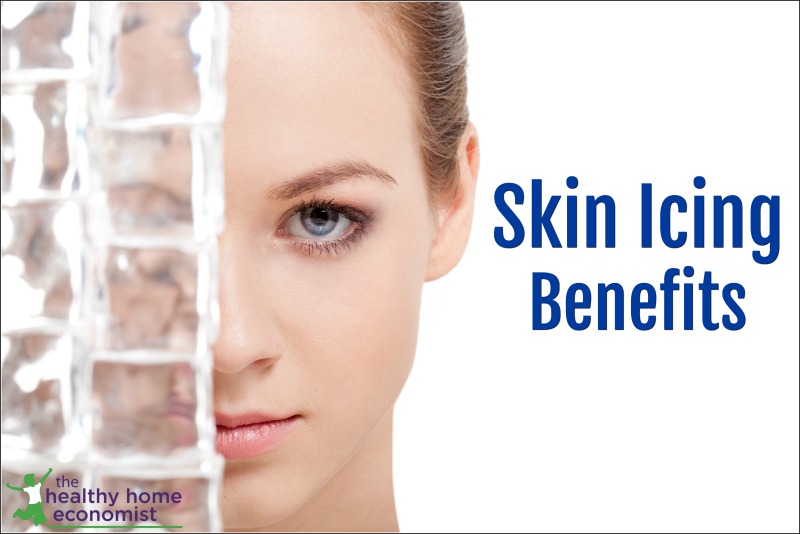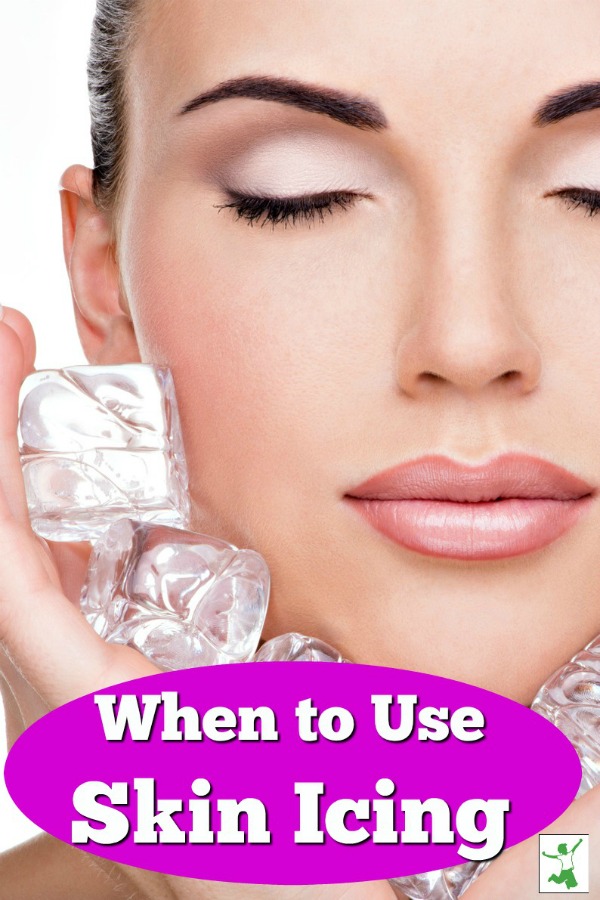Skin icing has numerous benefits including a rapid reduction in breakouts along with improved firmness and an overall younger appearance.
Growing up as a runner, I remember very clearly when I would train in the winter through rain, hail, and even storms. Although this was painful, not to mention super uncomfortable, the one thing I would always look forward to was how my skin looked upon completion. I know this sounds crazy, but when you grow up having acne (even into your adult life), the moments that your skin looks great you truly cherish.
Why was it that this specific situation caused me to love the aftermath? It just so happens that running in the bitterly cold temperatures worked very well to decongest and help clear up my skin, as that was the only part of my body that was fully exposed to the chilly breeze.
The great news I’ve discovered since then is that skin icing can be used anytime to hugely benefit your skin clarity and tone and even reduce the signs of aging!
Skin Icing to the Rescue!
Although I’m no longer enthusiastic about running in the rain and hail, I have been able to replicate this sensational look through another method I do daily. I first heard of the concept of skin icing through a good friend and esthetician in San Francisco who owns an acne clinic.
She told me to start icing my skin day and night to help with the inflammation with my breakouts. At first, I wasn’t sure how this would help, but I soon became a believer and advocate when I saw the amazing results.
Benefits
The technique known as ‘skin icing’ is routinely performed by Korean women and several other cultures. It simply and very literally involves applying ice to one’s skin. The practice helps with the following skin challenges:
- Reduce puffiness
- Prevent wrinkles
- Tighten the skin
- Reduce the appearance and size of pores
- Produce smoother skin
- Lessens the appearance of scarring
- Treat and prevent
Icing your skin is helpful with any inflammation on the skin surface, helping to reduce the swelling and redness that follows especially with acne, as icing in itself is anti-bacterial. It also reduces healing time as well as prevents future breakouts.
How Icing the Skin Really Works
Cold temperatures improve circulation in the skin, so when I ran in the cold this would temporarily constrict blood vessels so that there would be less blood flow to the skin (reducing any inflammation present). As a result, my body sent more blood to the area than normal, which is why after cold runs my pores would contract to allow for that taut and glowing complexion.
A popular yet expensive form of ‘cold therapy’ (although not sure of the safety concerns with this) is known as liquid nitrogen freezes. This is injected directly to affect specific nerves in the forehead and between the brows. According to Facial specialist, Rani Mirza,
“This [cold therapy] puts the nerves into temporary hibernation, so muscles relax and wrinkles disappear. The cold causes the blood vessels to contract and then dilate, which improves the oxygen and nutrient supply to the skin’s surface, making it appear more radiant”
Luckily skin icing achieves a similar effect more safely and for zero cost if incorporated on a daily or even regular basis.
Very Simple Skin Icing Procedure
Although it may sound scary, the actual application is quite simple, easy, and thankfully extremely affordable.
What you will need
- 1-2 ice cubes -OR- a silicone popsicle holder (like this)
- One washcloth
- One handkerchief (optional)
How to Apply the Ice to the Skin
- Start off with clean skin. You can ice in the morning or at night. If you’re icing at night, I recommend washing your skin via oil cleansing, and not using a harsh cleanser. If icing in the morning, there is no need to wash your face (unless you were sweating or sleeping on dirty pillowcases). In fact, this can contribute to the overproduction of oil. Instead, simply splash your face with cold water and pat dry with a washcloth. Then begin icing.
- Hold the ice cube and rub directly on your face in small circular motions all over for several minutes (at least 2-3 minutes), holding and concentrating on areas that are in need the most (pimples, cysts…), although skip the delicate eye area.
Note: A handkerchief can also be used to wrap the ice cube/s with if needed. This can be convenient if you don’t want to freeze your fingers by holding the ice. This is why I recommend using a silicone popsicle holder. They work fabulously! I did get this idea from my friend who is an esthetician, so I can’t take credit for this brilliance. A silicone popsicle holder allows you to still have direct contact of the ice to your skin while holding and pushing up the shaft as the ice melts protecting your delicate fingers. If you are concerned about using silicone molds, the linked article explains when it is safe and when it is not. - At the same time, you are icing your face, you want to hold your washcloth underneath your chin and the areas that you are icing as it can get messy with the ice melting and water falling. Alternatively, you can also ‘ice’ over the sink.
- Your skin should feel cool, damp, and a bit numb. After, pat dry with a soft towel.
- You can now apply your favorite toner, rose water spray, and/ or jojoba, olive, or argan oil to use on the skin. Be sure to watch out for coconut oil as a facial moisturizer, as it can exacerbate breakouts or some people which negates the benefits of skin icing.
I used to ice twice a day when my skin was breaking out badly, but once I got it under control I switched to only icing in the mornings. Because your skin detoxes at night, morning is a perfect time to ice to get rid of any puffiness that has occurred.
As a bonus, you’ll probably notice that icing the skin in the morning also makes your makeup go on much nicer having a taut foundation to work from.
Precautions
Icing for some skin types, such as those with rosacea or broken capillaries is probably not ideal.
Icing can cause irritation for some, especially with overly sensitive skin. You also want to avoid icing any one area for more than 15 minutes as this can possibly freeze and damage capillaries.
Closely observe how your skin responds to any new treatment including skin icing and stop whenever you feel the need. For most people, however, icing is very safe so you can approach it with confidence and easily incorporate it into your daily skincare routine to reap the benefits.

More Information
Clear Skin Starts with a Healthy Gut
Heliotherapy: Benefits Far and Beyond Vitamin D
Eczema Treatment: Avoiding the Drug-Based Domino Effect
Histamine Intolerance, Fermented Foods, and Acne








What about just plunging the whole face into a sink full of cold water? (I live in Vienna, Austria, and the tap water is very cold)